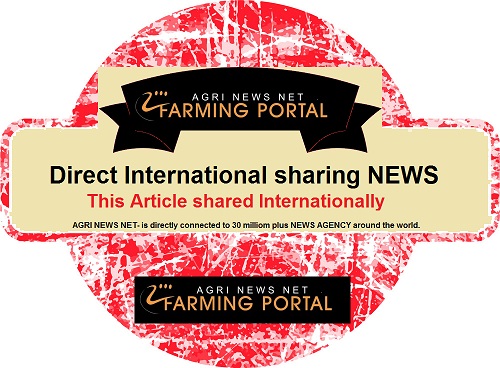International outcry has been sparked following cruel treatment of lions in South African breeding facilities and these big cats are facing a new threat due to an increased demand for their body parts, including bones, teeth and claws. Unsuspicious tourists pay to take selfies while petting cute cubs or walking with lions in farms. Many of the animals are then transferred to what are known as “canned hunting” facilities to be shot by trophy hunters, and their bones and other body parts are then sold on local and international markets.
Bone export quota
The skeletons of these animals are used in traditional medicine and trinkets, mostly in Southeast Asia. More than 6‚000 lion skeletons have been exported from South Africa to Southeast Asia in the last decade and the bones come mainly from so-called “canned” lions — those bred in captivity and shot by paying hunters. Vietnam is the largest importer of lion bodies and the second largest importer of skeletons. Laos is the largest importer of lion bones and skeletons whilst the United States is the largest importer of lion trophies, according to a 2018 reportby the Convention on International Trade in Endangered Species (CITES).
A 2015 report on lion bones found that higher demand from China and Southeast Asia followed stronger conservation measures aimed at protecting tigers and other Asian big cats, possibly prompting dealers to turn to African lions as a substitute, as their body parts look similar to tigers’. Legal exports of South African lion skeletons increased from about 50 in 2008 to 573 in 2011.
Controversially, South Africa’s former Environmental Affairs Minister Edna Molewa took the decision to doubled the quota in 2018 to 1,500 skeletons without consulting stakeholders beforehand. In July last year, she stated that the 2018 lion bone export quota met international guidelines on wildlife trade and a three-year study with annual reviews will assess its impact on wild lions. However, experts warn that the lion bone quota is harmful because it encourages lion poaching and trafficking, operated by a sophisticated illegal wildlife trade syndicate that also deals in commodities such as rhino horn.
In July last year, South Africa’s former Environmental Affairs Minister Edna Molewa stated that the 2018 lion bone export quota met international guidelines on wildlife trade and a three-year study with annual reviews will assess its impact on wild lions. Controversially, Molewa took the decision to doubled the quota in 2018 to 1,500 skeletons without consulting stakeholders beforehand. Experts warn that the lion bone quota likely did harm by encouraging lion poaching and trafficking, as the illegal trade involves a sophisticated syndicate also dealing in other commodities such as rhino horn.
Luke Hunter, chief conservation officer for wild cat protection NGO Panthera says the South African government failed to provide legitimate scientific reasons that would justify the idea that a legal trade in bones may offset illegal activity or at least that would explain why such a large increase is warranted. “I’m pretty dismayed by it. Look at how these poor helpless lions in canned farms live. It’s so sad that these lions have little to do but only to wait for the bullet to take their fate,” he stressed.
CITES has observed that more than 8,000 lions live on farms and captive facilities in South Africa, while somewhere between 1,300 and 1,700 adults remain in the wild. “A maximum of 20,000 lions survive in Africa as a whole, a number that plunged 43 per cent between 1993 and 2014,” CITES disclosed. The International Union for Conservation of Nature (IUCN), which works to establish the conservation status of many wildlife species, classifies this animal as vulnerable to extinction.
Female lions forced into continuous breeding
Meanwhile, several undercover investigations into lion-breeding farms have disclosed that cubs are taken from their mothers when they’re just a few hours or days old to be used as photo props, earning big money for the owners. Mother lions are forced into continuous breeding and are inseminated over and over again. In these canned hunting facilities, the cubs are never released into the wild (and couldn’t survive if they were) and are hand-raised in cages, becoming so used to humans that they associate their scent with mealtime. Many of them are then killed as trophies: the hunting industry is booming in South Africa and trophy hunters are trying to promote the term “captive hunting” to distance the practice from the negative connotations of canned hunting.
But wildlife campaigner and researcher Aron White has observed that trade in lion bones, teeth and claws is exacerbated by the demand for such facilities and seeming legitimacy of breeding lions.
The canned hunting industry hand-raises lions in cages: the animals become so used to humans that they associate their scent with mealtime. Many of them are then killed by trophy hunters © Benkoesafari
Tourists duped
Many tourists and volunteers often pay thousands of dollars to help hand-raise the lions, thinking they’re participating in conservation projects, unaware that they’re supporting a coordinated lion bone trophy industry. British wildlife charity Born Free has called on South Africa to immediately shut down its canned hunting and commercial predator breeding industry, and even many hunting organisations condemn the practice. “This scam puts wild lions and other cats at increased risk from poachers seeking to launder their bones and other body parts into trade,” states the NGO’s president, Will Travers.
In 2016 the IUCN warned that wild lion parts from eastern and southern Africa could be drawn into the large illegal wildlife trade to Asia centred around elephant ivory. However, although lion farming makes no contribution to wildlife conservation and has close connections to international wildlife trafficking, South African authorities continue to support its growth.














